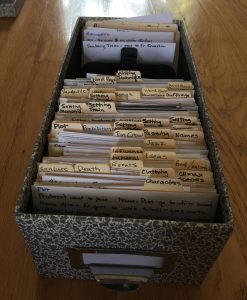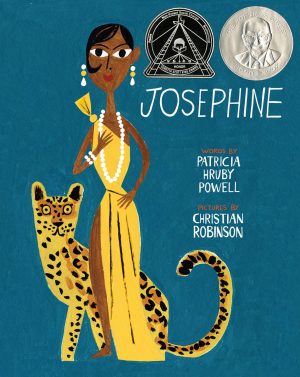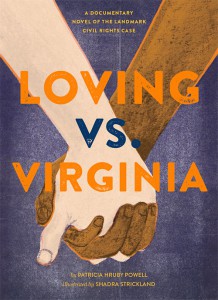Show-Don’t-Tell is a writer’s adage and a technique that allows readers to experience a text through their senses and emotions—which is how most of us want to experience text. We want to be drawn into the story and to empathize with the characters. There are various ways to do this and those ways overlap. I’ll describe a few here.
Tip #1A Word Bank: Senses
Writing is a sensual medium. Mostly it’s a visual medium, but all the senses can be used to make your writing come to life. I love author and workshop leader Darcy Pattison’s exercise of drawing an icon for each of the senses: eye, ear, nose, mouth, hand (for tactile). Then you make a word bank or phrase bank for your story. If you’re writing a picture book, your word bank might be a page long. If you’re writing a historical novel, your word bank might extend to hundreds of notecards.
to life. I love author and workshop leader Darcy Pattison’s exercise of drawing an icon for each of the senses: eye, ear, nose, mouth, hand (for tactile). Then you make a word bank or phrase bank for your story. If you’re writing a picture book, your word bank might be a page long. If you’re writing a historical novel, your word bank might extend to hundreds of notecards.
Look at the opening of Loving vs. Virginia: A Documentary Novel of the Landmark Civil Rights Case. (Forgive me for using my own work, but it will exemplify the tips I’m highlighting. For the sake of space, I do not include all the line breaks).
Garnet and I walk in the grass alongside the road
to keep our shoes clean,
but Lewis doesn’t care.
He’s shuffling through dust in the middle of the road.
Garnet’s hand-me-down lace-ups have the most life left in them,
so they’re the best.
She gets the best ’cause she’s oldest and has the feet to fit them.
I wear her way wore-out saddle shoes from last year
but painted and buffed till they nearly glow.
To me, they’re the best—being saddle shoes—
even though I can feel every stick and pebble through the thinned-down soles.
Lewis wears boots so wore-out—
looks like Nippy chewed them soft in the barn.
Being the youngest of seven brothers—
no telling who wore those boots before him.
As the scene continues, the siblings insult each other, laugh, argue, then the two big sisters grab Lewis’s elbows and fly him over the dirt road . . .
with him pedaling mid-air and hollerin’ and that’s how we arrive at Sycamore School.
This scene is mostly visual (you see the grass, the various shoes, the road). But you also hear the aural (hollerin’). You experience the tactile, as when Mildred feels every stick and pebble through the thinned-down soles.
Tip #1B Word Bank: Pithy Details
Whether you develop details in word banks or on the run, you want them to pack a punch. The dusty road shows that the setting is rural. The hand-me-down lace-ups show that they’re poor. The saddle shoes date the piece. The writer doesn’t have to tell us that the kids are poor, that this is historic, or that the kids get along, are lively, and live a good life. The writer shows it.
It usually takes more words to show rather than tell, but if you show well, then you’re doing double duty and conveying facts, gracefully—such as, Garnet and six brothers are older than Mildred and Lewis is younger—without those bits sounding like clunky facts being dropped into the story.
Tip #1C Word Bank: Verbs
Good verbs are the powerhouse of good writing and good showing. And they’re great to develop in the Word Bank exercise. Lewis is shuffling, Mildred painted and buffed her saddle shoes. Nippy chewed the boots soft. Lewis arrives pedaling and hollering.
Look at a couple of scenes from Josephine: The Dazzling Life of Josephine Baker.
[scene:]
Off the street and onto the stage,
Josephine danced like she was
ON FIRE.
She arched her back and flipped her tail like a rooster,
she flapped and pumped,
dancing the “turkey trot”
SO FINE
that the Dixie Steppers asked her
to step along with them.
[bridge:]
So long, Jones family. Josephine was steppin’ out.
[scene:]
YESSIR, she soared over the stage as Cupid,
god of love, with leaping legs and little wings.
Hooked on wires,
she held bow and arrow.
But her wires got crossed.
Couldn’t get down. Hanging in midair,
she rolled her eyes like shooting marbles,
flailed those long legs.
WHAT A CLOWN!
The audience laughed themselves to tears.
They STOMPED.
They CLAPPED.
Josephine arched, flipped, flapped, pumped, soared, and flailed—giving a kinetic boost to the text. Hopefully the verbs make you feel the dance. It was really fun to dance the dances in order to find just the right verbs—and those verbs are pretty razz-ma-tazz. Unless it’s called for, you don’t want to overdo the verbs. Elsewhere in the book:
…rich white flappers and sleek gentlemen
strolled the UPPER decks . . .
Using accurate verbs keeps you from using unnecessary adverbs. The elite strolled rather than “walked leisurely.” Can’t you see them arm-in-arm, owning the world, in their privileged manner? That adverb “leisurely” would have detracted from the succinct activity. They strolled. I can’t think of a better verb. Even ambled is not quite right. They strolled.
Verbs must fit the mood of an individual piece. Loving vs. Virginia is a quieter book than Josephine,and the vocabulary overall must convey a sense of quiet people. Mildred Jeter’s people were farmers, so they plant, slaughter, butcher, pluck, and sugar. Mildred is lyrical, gentle, and imaginative, so she describes her rolling hills and woods—threaded with creeks.Threaded.
Richard Loving is also gentle, but has a bit of an edge. He describes the cruel sheriff as chewin’ on his teeth . . . trying to figure out what mean thing he could do. Or Richard spat out the harsh moonshine—words that show a little defensiveness.
Tip #2 Create Scenes
Whether for picture books, MG, or YA, for fiction or nonfiction, scenes invite your readers into the text by allowing them to visualize your story—like they’re watching the scene of a movie. You set your character in a place, your character moves the story forward by some action, and then the scene closes. You might create a “bridge” of necessary information and then begin your next scene.
The first sample above is a complete scene from Loving vs. Virginia. The scene opens on the children walking to school on a dirt road. You see the characters, get to know them, discover information about their lives. When they arrive at school, the scene closes. Besides being drawn in by this “movie clip,” are you drawn in by the pithy and sensual details and accurate verbs?
Background: I’d researched this subject intending to write a nonfiction book. I visited the Lovings’ rural Virginia section, spoke to family members and friends. I studied the nine-year case. And then my editor called and asked if I’d be willing to write Loving as a documentary novel. “Sure,” said I. (I wasn’t yet under contract.) “What’s a documentary novel?”
Answer: As in Truman Capote’s novel In Cold Blood, which is the story of a real murder. Capote interviewed the murderer, police, and neighbors and read the news reports. He told the story from the point of view of the murderer. This is an informational book using a fictional element, also called a nonfiction novel.
The fictional element in Loving vs. Virginia was my writing it in the voices of the two real plaintiffs, Mildred and Richard Loving. I studied existing news and documentary footage of the couple from the sixties until I felt I knew them well enough to write scenes about their childhood, their falling in love, their exile, and their fight to return home.
What a gift this turned out to be—writing it as a documentary novel or nonfiction novel.
I used what I knew and created scenes from my imagination. However, everything in the historic record or told to me by an interviewee remains factual.
This prompts the question: can you make scenes writing actual nonfiction? Yes. It’s more challenging than it is in fiction, but aren’t we all up for a challenge? Josephine is straight nonfiction, written in verse. I have labeled the above passage “scene, bridge, scene” to help you identify the parts.
If I were telling (rather than showing) that first scene, I might say:
Because she was seen dancing in the street, Baker was invited to dance in a theater. Her execution of the popular dances of the day, such as the “turkey trot,” was so lively that professionals, the Dixie Steppers, asked her to join their troupe.
That is not a scene. It doesn’t open. And it doesn’t quite close. The facts are the same as those in the scene. But it doesn’t run like a movie clip. It doesn’t evoke much in the way of visuals or emotion.
Whatever your genre, writing in scenes will lift your writing out of the telling category and into showing. Yes, you can also TELL information within your story, but the more scenes you create, the deeper you’ll take your reader into your story so they can empathize with your characters.
Show, don’t tell. Use pithy details chosen from your word banks (which include great verbs) to write scenes. In the next issue maybe we’ll look at the sound of words or metaphors and similes or some such. Please e-mail me with questions or subjects you might want covered.


Leave a Reply